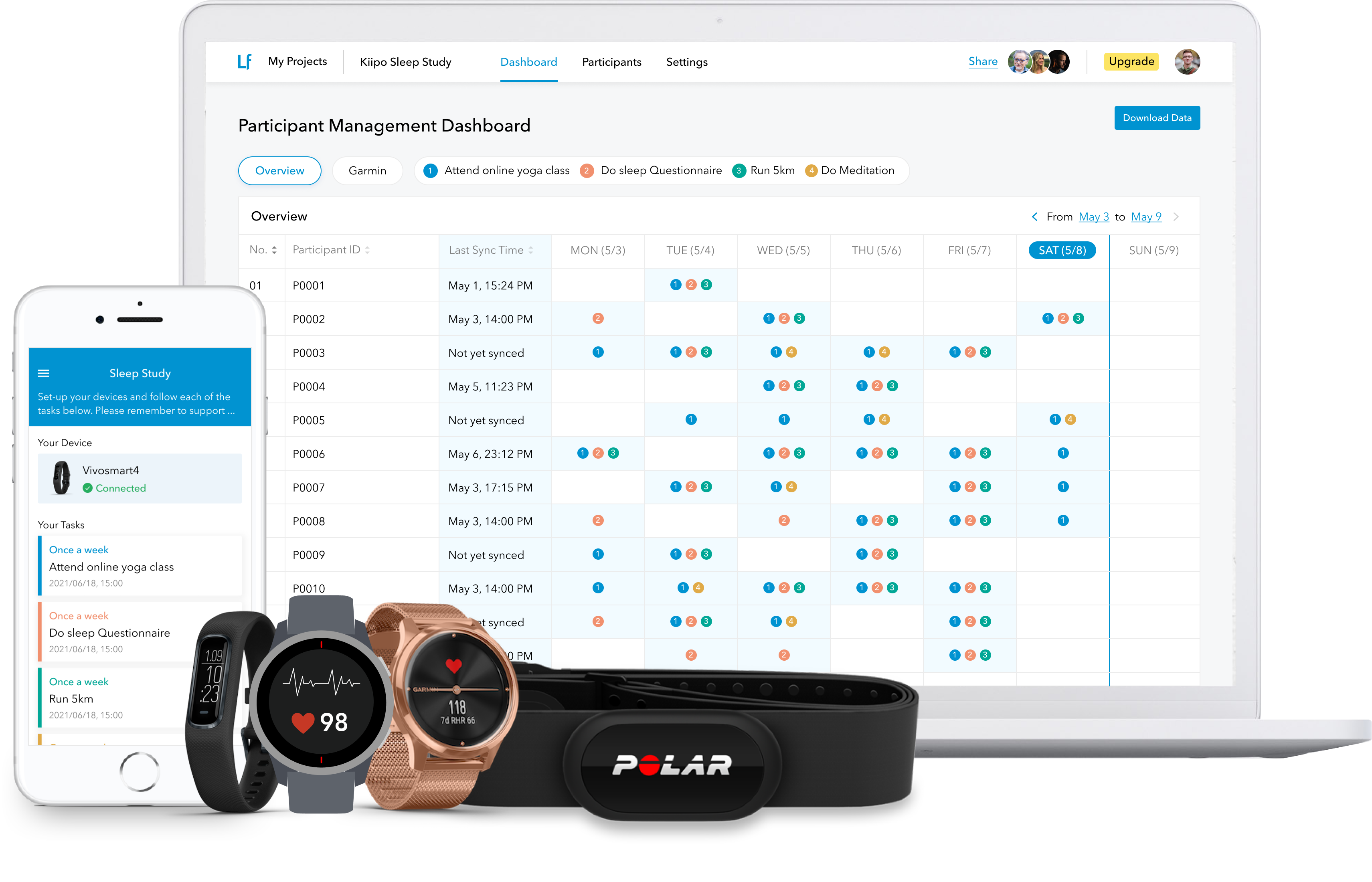Labfront's digital biomarker collection platform allows researchers to easily capture physiological data from wearables without requiring coding skills, establishing Labfront as a dominant force in the academic research community.
“Our partnership with Colabra is the perfect fit for Labfront's innovative platform for biomarker collection from wearables. With Colabra's robust research management software, we're able to bring visibility to all the data and research workflows, allowing teams to collaborate better and accelerate health research.” — Chris Peng, CEO, Labfront

Please tell us about your background and how it led you to start Labfront
I was born and raised in research labs. Literally. The Harvard-affiliated hospital where I was born was the same one my dad worked at, where he would eventually found the Center for Dynamical Biomarkers lab. When I was 6, I was part of one of the first wearable research studies on children, back when wearables were literally backpack-sized.
In high school, I interned for Dr. Vera Novak at the SAFE Lab (BIDMC/Harvard Medical School), where I helped medical doctors visualize data using Matlab. Here I was, a teenager that loved programming, helping PhDs and MDs because programming was a serious hurdle for these busy people.
Being around research for so long, I saw first hand how difficult the job of researchers were. Underfunded and overworked, they were also overlooked by the market. While new tools were revolutionizing workplace productivity, researchers were stuck using the same old, often poorly designed and/or outdated tools.
These insights eventually led me to founding Labfront.
What are the customer needs that Labfront solves?
Data capture was traditionally done in the lab, but with COVID-19 shifting the world to remote and hybrid, the old methods no longer worked. As researchers shifted their focus to digital tools, there are two major issues.
1) To collect data, researchers were using 3-5 different software tools. Something for collecting survey data, another software for capturing a wearable device, a third for informed consent, etc.
2) Once data is captured, they spent hours and hours just reformatting the data so they can use it, since everything came from different places and used different formats. After that, they'd need to use basic coding just to visualize the data.
Labfront solves both issues, starting with data capture. As an all-in-one solution, Labfront helps researchers keep everything in one place, so they can manage the entire data capture component in one system.
By having all the data in one place, this avoids hours and hours spent on reformatting and downsampling to making things work.
In the next few months, Labfront's no-code visualization and analytics engine will be publicly released, meaning researchers will no longer need to learn coding skills to work with their data.
What are the key features that make Labfront stand out from other solutions?
Labfront turns affordable consumer wearables from leading brands like Garmin into powerful research data capture tools through direct integration with the hardware partner. Instead of relying on the normal cloud APIs which are limited to the resolution stored by the consumer hardware company, we've worked to natively support the hardware. In the case of Garmin or Movesense, it means our app can turn on a bunch of sensors that is usually turned off, and even increase the sampling rate.
Although our core focus is in wearable data capture, our key insight is that wearable data is only one of the multitudes of data that researchers collect. That's why we've built in a simple custom questionnaire system.
Can you share some examples of how customers benefited from Labfront?
Utilizing consumer wearables can reduce the cost of hardware by a factor of 10. Through our automated reminder system, and embracing a remote-first data capture environment, that can remove the need for the costly logistics and eliminate the need to hire research assistants. On the affordability side, we've seen full-fledged research projects with 30+ participants being able to be run on a budget under $10,000. This is unheard of before.
Labfront Analytics also eliminates the need for PI's to have to master very specific analytical methods. For example, Dr. Ann Hsing from Stanford saved tens of thousands of dollars and a year of time by utilizing Labfront Analytics to calculate non-linear Heart Rate Variability on her cohort of hundreds of participants.
For a full list case studies, go to https://www.labfront.com/case-studies
How does Colabra complement Labfront and enhance research experience?
While Labfront solves the issues around data capture and data analysis, that is only part of the full research lifecycle. Applying for funding, planning research, collaborating to analyze results and planning publications are all parts of the research lifecycle that Labfront does not help with. Colabra is the perfect companion Labfront to level up the entire research process.
